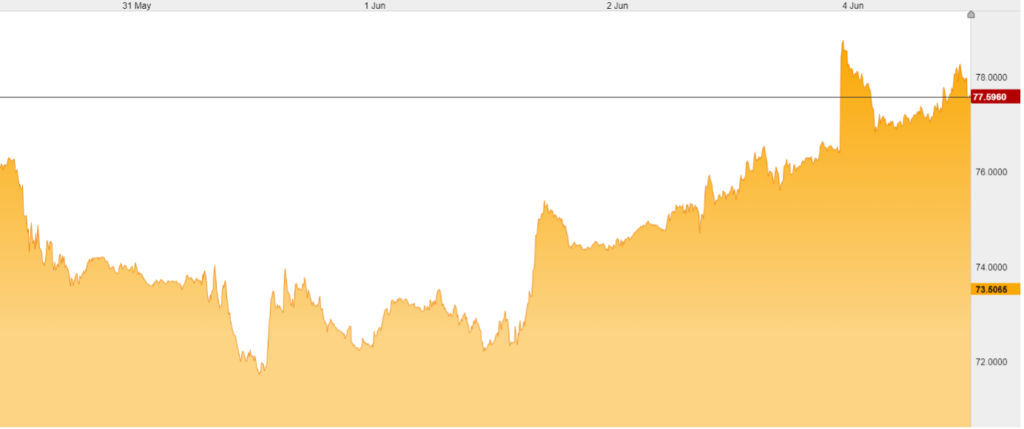A Look Back
On Sunday, Riyadh made an announcement regarding a fresh reduction in oil production, which came after a meeting of major producers who aimed to stabilize prices despite concerns of a possible economic downturn.
The meeting involved the 13-members of OPEC led by Saudi Arabia, and its 10 partners, with Russia at the forefront. The discussions during the OPEC+ meeting in Vienna were characterized by challenging negotiations.
Following the hours-long meeting, Saudi Arabia’s Energy Minister, Prince Abdulaziz bin Salman, informed reporters that the country would implement a new cut of one million bpd for the month of July.
Furthermore, the cut was described as “extendable.” The decision came as a departure from the widely anticipated expectation that OPEC+ producers would maintain their existing policy. Over the weekend, indications arose that the 23 participating countries were considering deeper production cuts.
In April, several OPEC+ members had agreed to voluntary production cuts exceeding one million bpd. This unexpected action briefly supported oil prices but failed to achieve a sustainable recovery.
The global oil industry is grappling with declining prices and significant market volatility due to the ongoing Russian invasion of Ukraine, which has disrupted economies worldwide.
Since the announcement of the April cuts, oil prices have plummeted by approximately 10 percent, with Brent crude approaching the $70 per barrel mark. This level had not been witnessed since December 2021.
The jump we saw represented a 7.5%+ move in Crude, which will surely be felt at the pump with immediate effect.
Looking Ahead
Goldman Sachs predicts that the announcement of a 1 million bpd production cut by Saudi Arabia could potentially increase crude oil prices by around $6 per barrel. However, the actual impact of the cut is expected to vary between $1 and $6 per barrel, depending on the duration of the production reduction.
Although the price increase is not substantial, it indicates that the influence of recessionary pressures persists, affecting both commodity traders and actual oil demand. According to Reuters’ market analyst John Kemp, the U.S. manufacturing sector officially entered a recession, experiencing seven consecutive months of contracting activity. As a result, there has been a decline in the demand for diesel fuel and other middle distillates, as well as a decrease in industrial electricity consumption.
Saudi Arabia has committed to additional production cuts. This, along with the potential for a tighter market, suggests a bullish outlook for oil in the short term. Traders and investors should keep a close eye on developments in the coming months. The impact of these measures could unfold and potentially affect oil prices.
Prices are considered favourable and we have seen many looking to combat price moves which could be exacerbated over the coming months.


